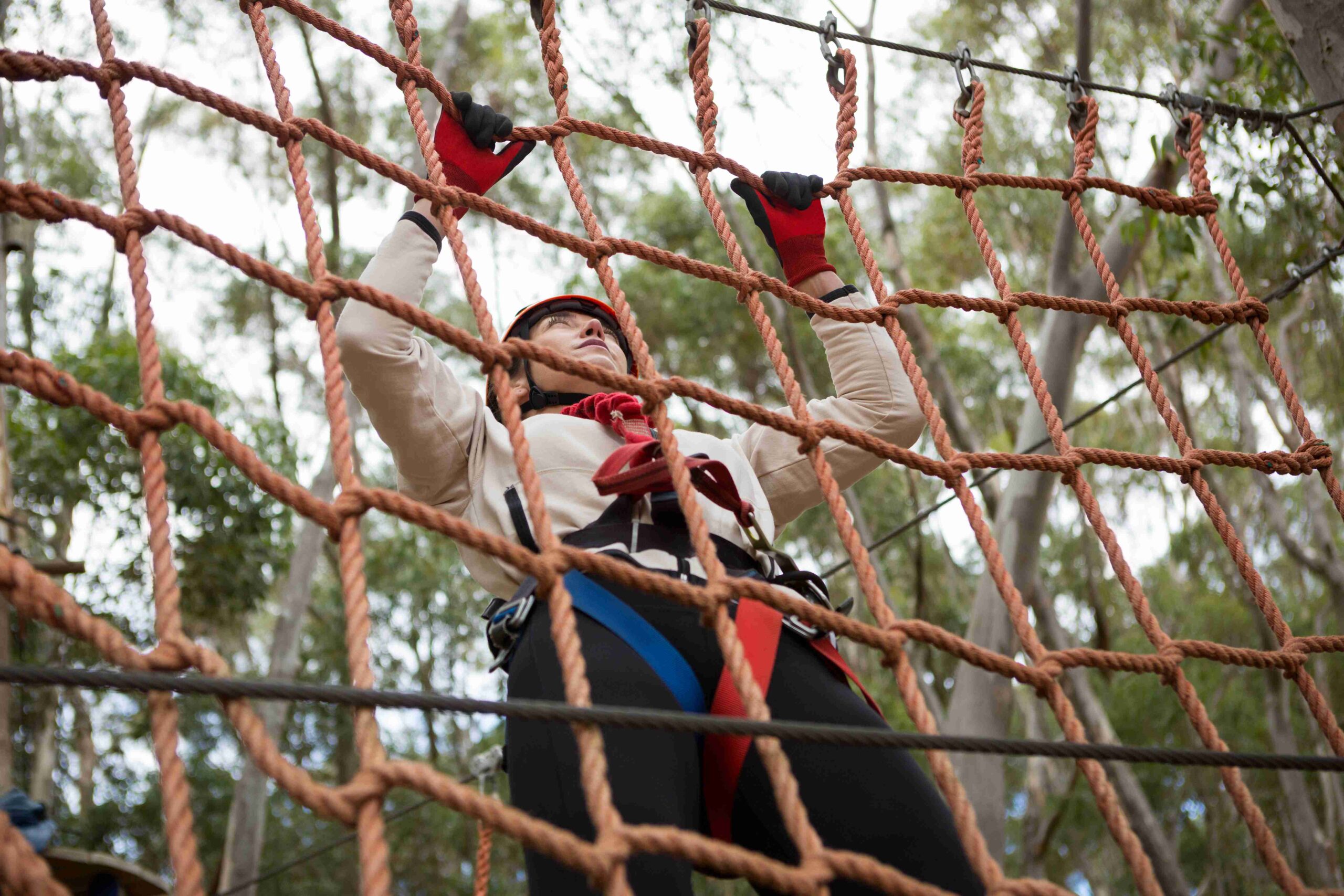For athletes dedicated to high-intensity fitness, rope climbing is a challenging yet rewarding exercise that builds strength, endurance, and agility. Whether you’re striving to conquer a tough workout or simply looking to add variety to your training regimen, mastering rope climbing is a valuable skill. Follow these four essential steps to learn the proper technique, prevent injuries, and elevate your performance on the rope.

Step 1: Come Prepared
Before you even approach the rope, proper preparation is key. Start by selecting the right equipment to protect your hands and enhance your performance.
- Choose Appropriate Footwear: Opt for functional training shoes with durable, rugged outsoles. These shoes help prevent excessive wear and tear when you grip the rope.
- Protect Your Skin: Ensure you have adequate protection for your skin. This can be achieved with long socks, knee sleeves, or specialized accessories designed for rope climbing. These items help reduce the risk of friction burns on your shins, calves, and thighs.
Taking the time to come prepared not only safeguards your body but also sets the stage for a successful climb.
Step 2: Master the Basic Technique
Once you’re geared up, it’s time to learn the fundamental technique of climbing the rope. The process involves four simple movements: Reach, Lift, Clamp, and Stand.
- Reach: Extend your arms fully to grab the rope. Make sure to get a high grip to minimize the number of pulls needed to ascend.
- Lift: After securing your grip, lift your knees toward your chest. This helps pull your feet upward along the rope, creating momentum for the next phase.
- Clamp: When your knees are near your chest, secure your position by clamping the rope between your feet. Experiment with different clamping methods, such as the Spanish Wrap, J Hook, or Stomp, to determine which feels most stable for you.
- Stand: Finally, transition into a standing position by using your legs to push your body upward while maintaining your grip. Repeat this sequence until you reach the top of the rope.
These steps form the foundation of a proper rope climb. With practice, you’ll learn to perform each movement smoothly and efficiently.
Step 3: Practice and Perfect Your Technique
Practice is crucial for internalizing the rope-climbing technique. Start by practicing from an elevated platform, like a bench or box, which lets you focus solely on your form without the full challenge of a vertical climb.
- Refine Your Clamp: Use the box to repeatedly practice the clamp technique. This controlled environment helps you perfect your foot positioning and the rhythm of your movements.
- Build Confidence: Gradually increase the height as you become more comfortable with the sequence, ensuring that each repetition reinforces the correct form.
Consistent practice on the box will build the muscle memory and confidence needed for a full rope climb.

Step 4: Test Your Technique
Once you’ve honed your movements on an elevated platform, it’s time to take your skills to the rope. Testing your technique is crucial to ensure that your progress on the box translates to the full climb.
- The Two Pulls Test: Climb a short distance, then quickly descend and repeat. This exercise verifies that your clamp and overall technique are consistent under real workout conditions.
- The No Hands Test: At a point in your climb, try loosening your grip briefly to see if your feet and core can maintain your position. This test checks if your clamp is strong enough to support your body weight without relying heavily on your arms.
Successfully passing these tests confirms that your technique is ready for full rope climbs, reducing the risk of painful rips and ensuring efficient movement.
Elevate Your Performance
Taking a few extra minutes each day to care for your technique and equipment can significantly enhance your performance on the rope. With consistent practice and attention to detail, you’ll minimize injuries and maximize your strength, helping you reach new heights in your fitness journey. Embrace the challenge, and enjoy the climb as you develop a powerful, efficient rope-climbing technique that will support your overall training goals.